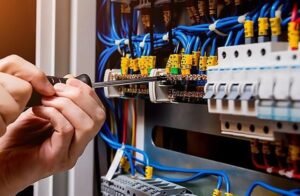
In any industrial setup or factory, the reliable performance of wires and cables is vital for uninterrupted operations. While proper installation is essential, manufacturers also consider the significance of regular maintenance to ensure the longevity and efficiency of wires.
Read on as we delve into practical maintenance tips manufacturers use to maximize the wires’ lifespan and minimize the downtime risk.
Conduct Regular Inspections:
Regular inspections are fundamental to identify potential issues with wires. Manufacturers should establish a schedule for inspecting wires and cables and checking for signs of wear, damage, or degradation. The inspections include examining the insulation for cracks or brittleness, checking connectors for corrosion or loose connections, and ensuring proper grounding. By detecting problems early on, prompt action can be taken to prevent further deterioration or failures.
Address Wear and Tear:
Over time, wires may experience wear and tear due to environmental factors or mechanical stresses. Manufacturers should closely examine wires for any signs of fraying, exposed conductors, or insulation damage. Any compromised wires should be repaired or replaced immediately to prevent safety hazards and potential malfunctions. It is essential to use high- quality replacement wires that meet the required specifications to ensure optimal performance and compatibility.
Preventive Measures:
Manufacturers should implement preventive measures to safeguard wires from unnecessary damage. This includes avoiding excessive bending or twisting during handling or maintenance procedures. Properly securing wires and cables and providing sufficient support can prevent strain or tension that may lead to premature failure. Additionally, cable trays, conduits, or protective sleeves can help protect wires from physical damage and reduce the risk of accidental cuts or abrasions.
Maintain Optimal Temperature:
Extreme temperatures can adversely affect the performance of wires. Manufacturers should ensure that cables are installed and operated within the recommended temperature range specified by the manufacturer. Exposure to temperatures beyond this range can lead to insulation degradation, reduced conductivity, and potential breakdowns. Implementing temperature monitoring systems and insulation materials with higher temperature ratings can provide protection and prevent overheating.
Protect from External Elements:
Wires and cables should be protected from elements that can cause damage, such as moisture, chemicals, or direct exposure to sunlight. Using waterproof or moisture-resistant enclosures, applying protective coatings, or utilizing cable management systems can significantly enhance the durability and reliability of wires.
Regular Cleaning:
Dust, debris, and contaminants can accumulate on wires and cables, affecting their performance over time. Incorporating regular cleaning practices to remove any build-up that may hinder proper functioning is essential. This can be achieved using appropriate cleaning agents recommended for electrical components.
Document Maintenance Activities:
Documenting inspection dates, repairs, replacements, and any observed issues provides a valuable reference for tracking the history of wires, identifying recurring problems, and planning future maintenance activities.
Remember, maintenance is not an unnecessary burden but rather a strategic investment. By implementing the maintenance tips and preventive measures discussed, you can finally let go of any worries about potential power interruptions. Taking a proactive approach to the maintenance of your wires and cables will yield a substantial return in the form of a resilient and robust industrial setup that can withstand the test of time. So, investing in the maintenance of your wires and cables is not just a wise decision but an essential step towards building a reliable foundation for your manufacturing business.
SOURCES:
Link 1, Link 2, Link 3, Link 4, Link 5, Link 6, Link 7




